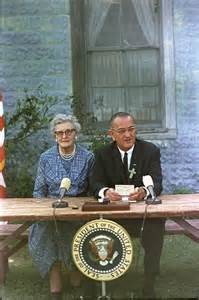

August 18, 2015
The call to “fix it” was the most common refrain in the chambers of Congress this July as the U.S. House of Representatives and Senate debated the complex issues of the reauthorization of the Elementary and Secondary Education Act of 1965 (ESEA).
The Student Success Act (H.R. 5) passed the House of Representatives on July 8, 2015, by a vote of 218-213 and the Every Child Achieves Act (S. 1177) passed the Senate on July 16, 2015, by a vote of 81-17.
The countless hours of discussion and debate leading to passage of each bill generated many memorable, impassioned speeches about society’s obligation to educate the nation’s children as the foundation for strengthening our democracy and economy. As one would imagine, with such multidimensional issues and a range of ideologies, there were areas of both agreement and disagreement. What seemed to resonate with everyone, however, was that Congress has an obligation to act on behalf of the nation’s children.
As a student of history, I wondered about the memorable and impassioned speeches made five decades ago culminating in the passage of the original ESEA. The LBJ Presidential Library and Museum provided a wealth of primary sources and the opportunity to hear from President Lyndon B. Johnson in his own words.
On April 11, 1965, Johnson signed into law the first ESEA (Pub. L. 89-10) – enacted by Congress on April 9, 1965. This bipartisan effort, a part of the larger War on Poverty agenda, passed the House of Representatives by a vote of 263-153 and the Senate by a vote of 73-18.
The president’s backd rop for the signing was the one-room school house in Stonewall, Texas, where he once attended. Seated next to him was his childhood teacher Kate Deadrich Loney. Johnson began his remarks: “I felt a very strong desire to go back to the beginnings of my own education – to be reminded and to remind others of that magic time when the world of learning began to open before our eyes.” 1
rop for the signing was the one-room school house in Stonewall, Texas, where he once attended. Seated next to him was his childhood teacher Kate Deadrich Loney. Johnson began his remarks: “I felt a very strong desire to go back to the beginnings of my own education – to be reminded and to remind others of that magic time when the world of learning began to open before our eyes.” 1
Going back to the beginning helps us keep the focus on children. ESEA’s original intent, represented a major new commitment of the federal government to provide “quality and equality in the schooling we offer young people.”
The core mission in 1965 was to help disadvantaged students improve academically – that mission, in various forms, is still reflected in the legislation today. Though the congressional bills emphasize different priorities, they address many of the same significant issues: accountability, teacher quality, equity, opportunity, interventions and support, local and state control, Title I funding, disaggregation of data, graduation rates, testing, and civil rights.
Since the last major overhaul of ESEA 14 years ago, which became the No Child Left Behind Act of 2001, the world has changed. We are a global society. We are more diverse. These changes make it even more important for today’s leaders to understand the significance of education to our economy and our democracy.
As the Every Child Achieve Act and the Students Success Act proceed to official conference this fall, the Johnson legacy reminds us of the “magic of learning” that each child should experience. It may be difficult to predict the outcome of the discussions and debates that will inevitably occur, but going “back to the beginnings” provides a framework for the future.
ESEA reauthorization is too demanding to have easy answers and too important to have none. More than 50 million students are counting on us to get this right.
1Transcript, Douglass Cater Oral History Interview I 4/29/69, by David G. McComb, Internet Copy, LBJ Library.